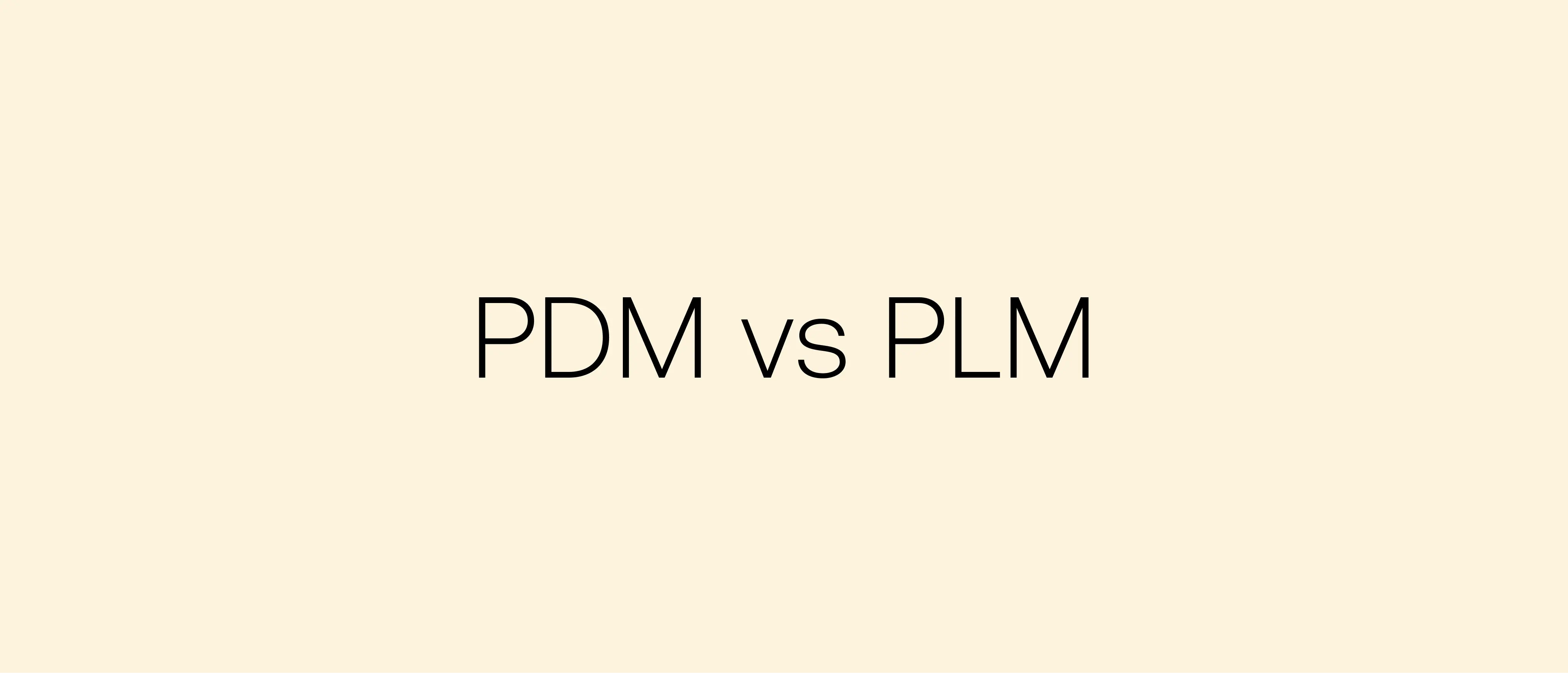
By Serina Slot Lauridsen
5 minute read
Serina Slot Lauridsen By Serina Slot Lauridsen
5 minute read
If you’ve ever tried to manage your product development using spreadsheets, email threads, or shared folders, you know how quickly things can get out of hand.
That’s where PDM and PLM come in, two systems that bring order, structure, and collaboration to the creative process. But when it comes to PLM vs PDM, what’s the real difference? Are they separate tools, or simply two parts of the same solution? And which one makes sense for your fashion brand?
Let’s break it down in a way that makes sense, no tech degree required.
What is PDM and PLM software? Let’s start with PDM
To understand the difference between PDM and PLM software, we first need to break the two systems down.
PDM, or Product Data Management, is a system built to handle product data, the core details behind every style, sample, and sketch. In fashion, a PDM software manages all the files and information that define your products: CAD files, Bills of Materials (BOMs), patterns, fabric specs, and trim details.
When brands talk about PDM tools or a PDM system, they often refer to how this technology keeps product information clean, organized, and consistent. Instead of searching through emails or shared drives, a PDM gives you a single source of truth for your design data.
You could think of PDM as the digital archive of your brand. It stores every technical element safely and makes sure everyone, from designers to product developers, works with the latest, approved version. Without PDM, product data becomes fragmented and easily lost. With PDM, you gain structure, control, and a reliable foundation to build from.
For many fashion teams, PDM is the first step toward digitalising product development. It brings discipline to the creative chaos and makes it easier to manage growing collections and complex data.
What about PLM software?
PLM, or Product Lifecycle Management, builds on what PDM starts. While PDM manages the data itself, PLM manages everything that happens around it, the workflows, communication, and collaboration that move a product from idea to finished sample.
A PLM software connects every stage of the product lifecycle, from design and development to sourcing and production. It’s where creative and technical teams work together on the same, always up-to-date information. In fashion, PLM isn’t just a tool; it’s the space where collaboration happens. It’s where designers upload new styles, product developers track changes, buyers share feedback, and suppliers respond in real time.
Some PLM systems, such as Delogue, integrate some PDM capabilities directly into the platform. That means you don’t have to choose between managing data and managing processes, you can do both. By combining PLM and PDM systems, fashion brands get the best of both worlds: reliable data and seamless workflows. The result is a smoother process, fewer mistakes, and faster time from sketch to store.
PLM and PDM difference explained in short
Although PLM and PDM software are closely linked, their roles are distinct. PDM is about what your product data is, it stores files, details, and specifications. PLM is about how that data moves through your organisation, it coordinates tasks, manages approvals, and ensures every step of the process is aligned.
So, PDM manages the details, while PLM manages the journey. PDM answers “what changed”, and PLM adds “how” and “why”. When working together, they are a part of creating a digital ecosystem for fashion, where creative thinking is supported by data-driven structure.
PDM or PLM: Which one does your fashion brand need
If your brand mainly works with product data and design files, starting with PDM can be a great foundation. It gives you control and ensures your data stays clean. But as your collections expand and more teams, like sourcing, production, and sales, become involved, PLM becomes essential. A PLM system connects everyone, providing visibility and structure throughout the product lifecycle. It removes silos and makes it easy to see progress across departments. In practice, it’s not a question of PDM or PLM, but rather how to combine both.
Most modern PLM solutions for fashion, including Delogue PLM, come with built-in PDM features, giving you the best of both worlds: data integrity and collaboration.
Can PDM exist without PLM?
Technically, yes, PDM can exist without PLM. But in today’s fast-paced fashion industry, that rarely makes sense. Product data doesn’t exist in isolation; it’s part of a larger process. That’s why modern PLM and PDM software are designed to work hand in hand.
When PDM data flows directly into PLM processes, updates happen instantly across the system. If a designer changes a fabric or adjusts a measurement, the sourcing and production teams see it immediately. This kind of integration reduces errors and keeps everyone aligned.
PLM, PDM and ERP: How they all fit together
You might also have heard of ERP, or Enterprise Resource Planning. While PDM and PLM handle product design and development, ERP deals with the business side, manufacturing, stock levels, logistics, and finance.
In simple terms, PDM manages data, PLM manages the product lifecycle, and ERP manages operations. Together, they create a digital foundation that connects creativity, production, and business performance.
Why fashion brands choose PLM with built-in PDM
For modern fashion brands, the smartest choice is often a PLM system with built-in PDM. This combination keeps data clean, workflows transparent, and communication effortless.
Delogue PLM is one example of how this works in practice. By merging PDM tools and PLM processes in one platform, brands can work faster, reduce costs, and make collaboration more natural. When data and people are connected, creativity flows, and products move from sketch to shop floor with ease and confidence.